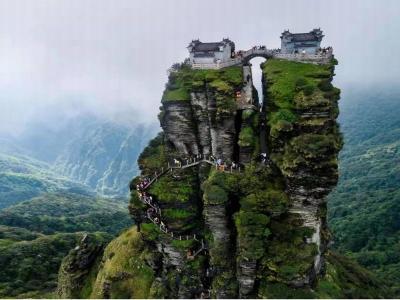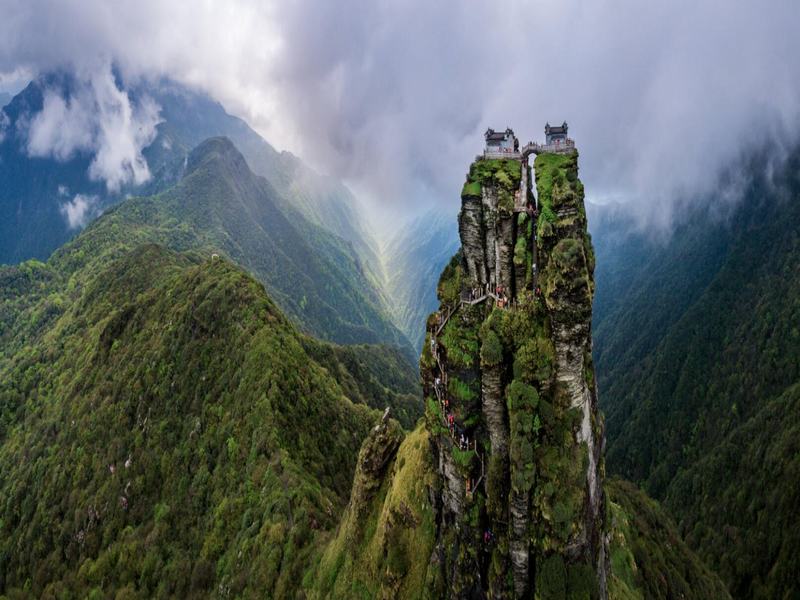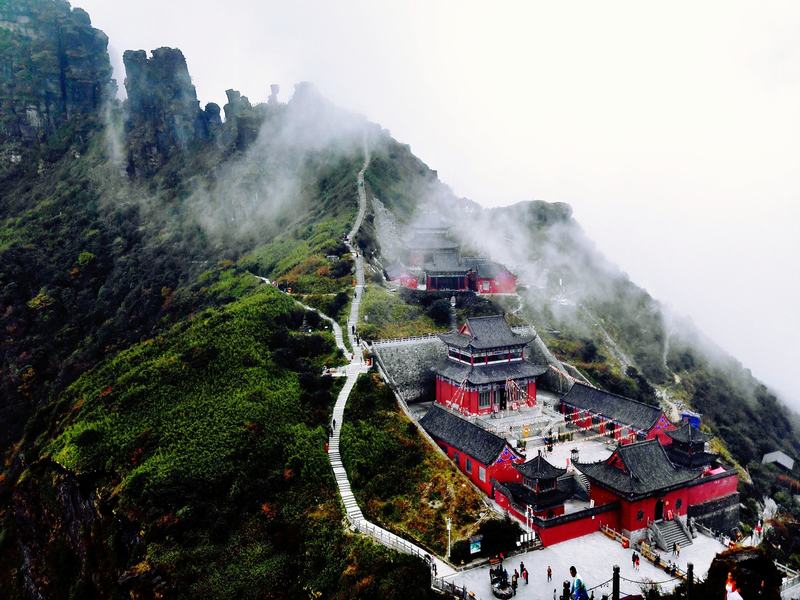Fanjing Mountain
Fanjing Mountain, or Fanjingshan, is part of the Wuling mountain range in southwestern China's Guizhou province. Situated at the confluence of Jiangkou, Yinjiang and Songtao counties, the muntain was established as a national nature reserve in 1978 and designated a UNESCO Biosphere Reserve in 1986, with a total area of 567 sq km. It was named a UNESCO World Heritage Site in July 2018.
Fanjing Mountain enjoys a reputation of being the "Ecological Kingdom", and the plant and animal gene database. Of all the animals and plants under state protection, dove trees, henry emmenopterys, Chinese tulip tree, Guizhou golden-hair monkeys and giant salamander are the most representative. In the scenic zone, tourists can appreciate the green peaks rising one higher than another, hanging waterfalls, crisscrossed streams and forests with a coverage rate of 95 percent; hence it is the only place with the best-preserved protophytes at the same latitude in the world. Fanjing Mountain is a Buddhist sacred place where the rites to pay homage to Maitreya (Future Buddha) is held regularly, and other tourist attractions include the four imperial nunneries, 48 Great Enlightenment nunnenes, and Huguo and Zhenguo Buddhist temples.

- Qingman Miao Village
- Double Breast Peaks
- Wanfeng Lake
- Wanfenglin
- Malinghe River Canyon
- Xijiang Qianhu Miao Village
- Jiaxiu Pavilion
- Qianling Park
- Huangguoshu Scenic and Historic Interest Area
- Dragon Palace
- Zhaoxing Dong Village
- Basha Miao Village
- Shiqiao Village
- Upper Langde Miao Village
- Twenty-four Turn Road
- 100-li Azalea National Forest Park
- Zhiiin Cave
- Fanjing Mountain
- Tianlongtunbao Ancient Village
- Suoga Ecological Museum
- Qingyan Ancient Town
- Hejia Village
- Liping Dongxiang

